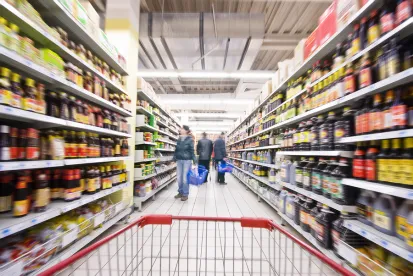On October 25, 2021, China’s National Health Commission (NHC) published a number of draft GB standards for food and food-related products, including a few key standards for food contact materials of plastics, rubber and adhesives.1 We provide below a general summary regarding these draft GB standards.
Draft Standard on Food Contact Use Plastic Materials and Articles
The draft Plastic Standard consolidates two standards currently in place in China that apply to both plastic resins and plastic materials and articles, namely GB 4806.6-2016 National Food Safety Standard on Food Contact Use Plastic Resins and GB 4806.7-2016 National Food Safety Standard on Food Contact Use Plastic Materials and Articles.
Compared with GB 4806.6-2016, which includes 102 permitted plastic resins for food contact uses, the draft Plastic Standard now contains 191 resins. One of the reasons for the increased number of listed resins is that a listing with multiple CAS numbers is now turned into separate listings (e.g., the copolymers of ethylene and various comonomers). The draft Plastic Standard also incorporates the new plastic resins that were approved by NHC since 2013.
The requirements contained in the Notes section in Table A.1 of GB 4806.6-2016 for certain substances, including the limitations on the water extract, loss on drying, hexane extract, etc., are now deleted as their safe use can be assured by the existing specifications (e.g., the overall migration limit). In addition, to further facilitate understanding by industry, abbreviations of plastic resins are listed in Appendix B of the draft Plastic Standard.
Notably, starch-based plastic materials and articles for which a draft standard was published in May 20182 also have been incorporated into the draft Plastic Standard. In addition to the requirements for raw materials, which can be edible starch or modified starch, the draft Plastic Standard also contains some special physicochemical specifications for starch-based plastic materials and articles.
Draft Standard on Food Contact Use Adhesives
This is the second draft GB standard on food contact use adhesives that NHC has published. Compared with the first draft that was released in 20193, the scope of adhesives remains unchanged, which applies to “materials that create adhesion by physical or chemical mode in food contact materials and articles, directly or indirectly in contact with food.”
This version of the draft Adhesives Standard also classifies adhesives into two categories (i.e., direct food-contact and indirect food-contact adhesives) and contains the following lists of base raw materials permitted for use in adhesives:
-
Table A.1 of Appendix A with 63 substances for use in both direct and indirect food contact adhesives (as opposed to 66 substances listed in the first draft)
-
Table B.1 of Appendix B with 337 substances (including monomers, starting materials and polymers) for use in indirect food contact adhesives (as opposed to 236 substances listed in the first draft)
Notably, substances with a molecular weight greater than 1,000 Daltons made from the materials listed in Table B.1 via polymerization or other methods also may be used as the base raw materials of indirect food contact adhesives. This will allow the use of many more polymers created from listed substances.
In addition, compared with the first version, the current draft Adhesives Standard deletes the provision that requires the migration test to be performed on finished food contact materials and articles. Also, the draft Adhesives Standard requires that the product category (i.e., direct food contact adhesives or indirect food-contact adhesives) be declared on the label.
Draft Standard on Food Contact Use Rubber Materials and Articles
The scope of the draft Rubber Standard captures food contact materials and articles composed primarily from natural, synthetic rubber or vulcanized thermoplastic elastomer. The requirements for food contact silicone rubber are deleted as it appears that China will establish a separate standard on silicone rubber.
The current Rubber Standard contains two positive lists, one of base polymers permitted for use in synthetic rubber, and the other of base polymers permitted for use in silicone rubber. Now, the draft Rubber Standard deletes the positive list for silicone rubber and contains only one positive list of base raw materials for use in rubber materials and articles (including natural rubber and synthetic rubber). Again, substances with a molecular weight greater than 1,000 Daltons made from the materials listed in the positive list via polymerization or other methods also may be used as the base raw materials of rubber materials and articles.
The draft Rubber Standard also adds a limitation on the total migration of primary aromatic amines (PAAs), which is “not detectable” with a detection limit of 0.01 mg/kg. Also added are the limitations on the migration of N-nitrosamine and products that may be generated from N-nitrosamine, which are 0.01 mg/kg and 0.1 mg/kg, respectively.
[1] http://www.nhc.gov.cn/sps/








 />i
/>i

